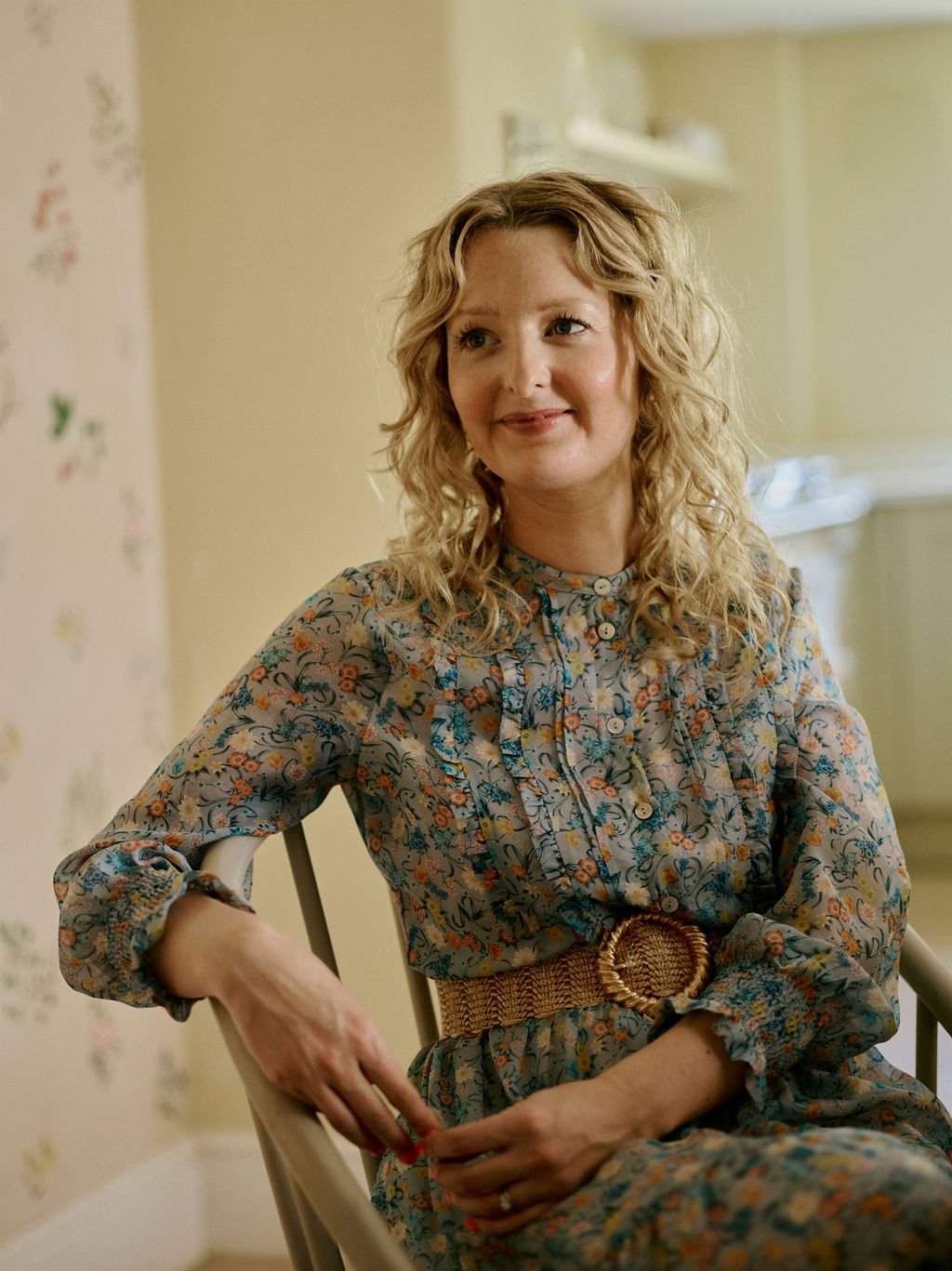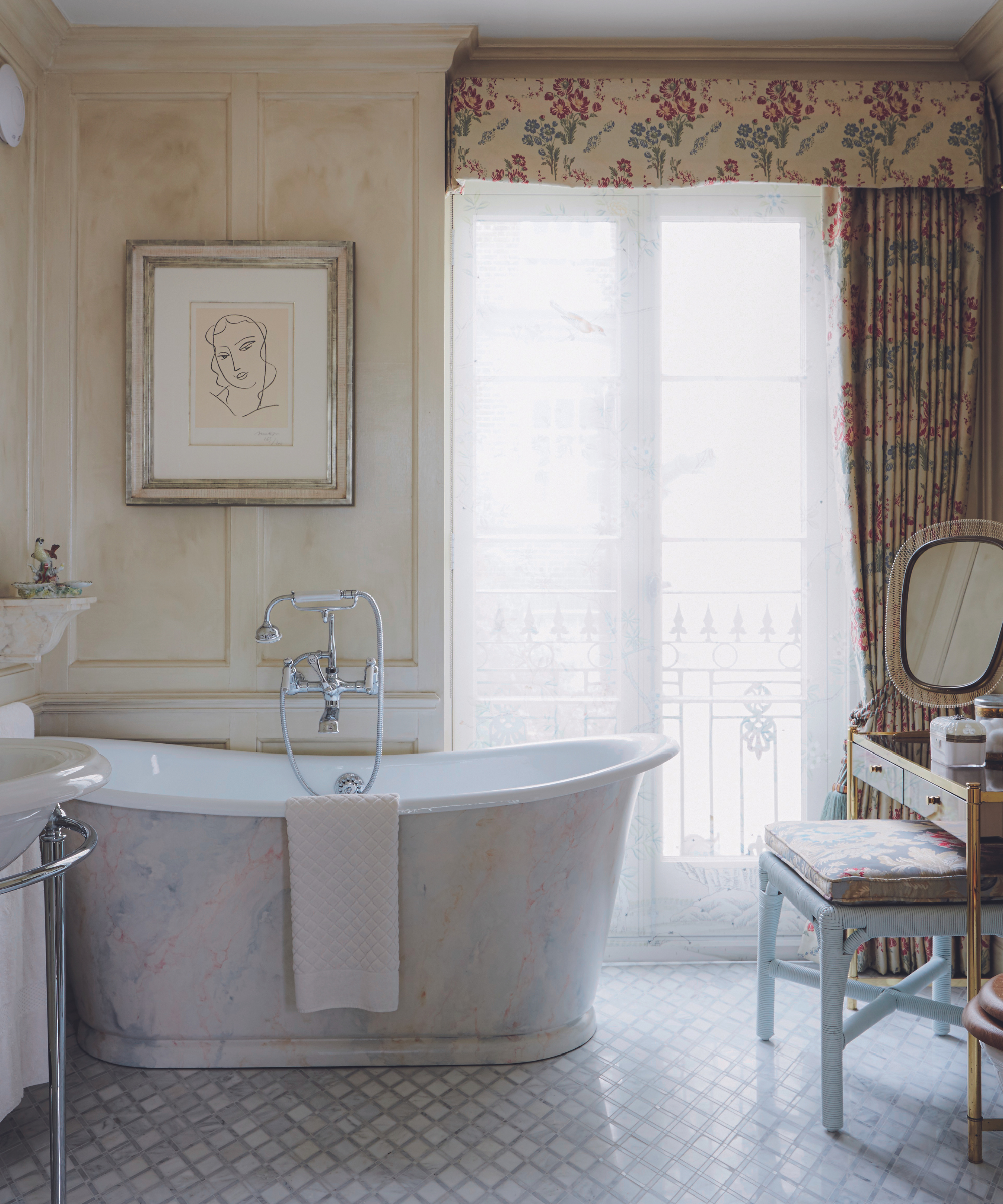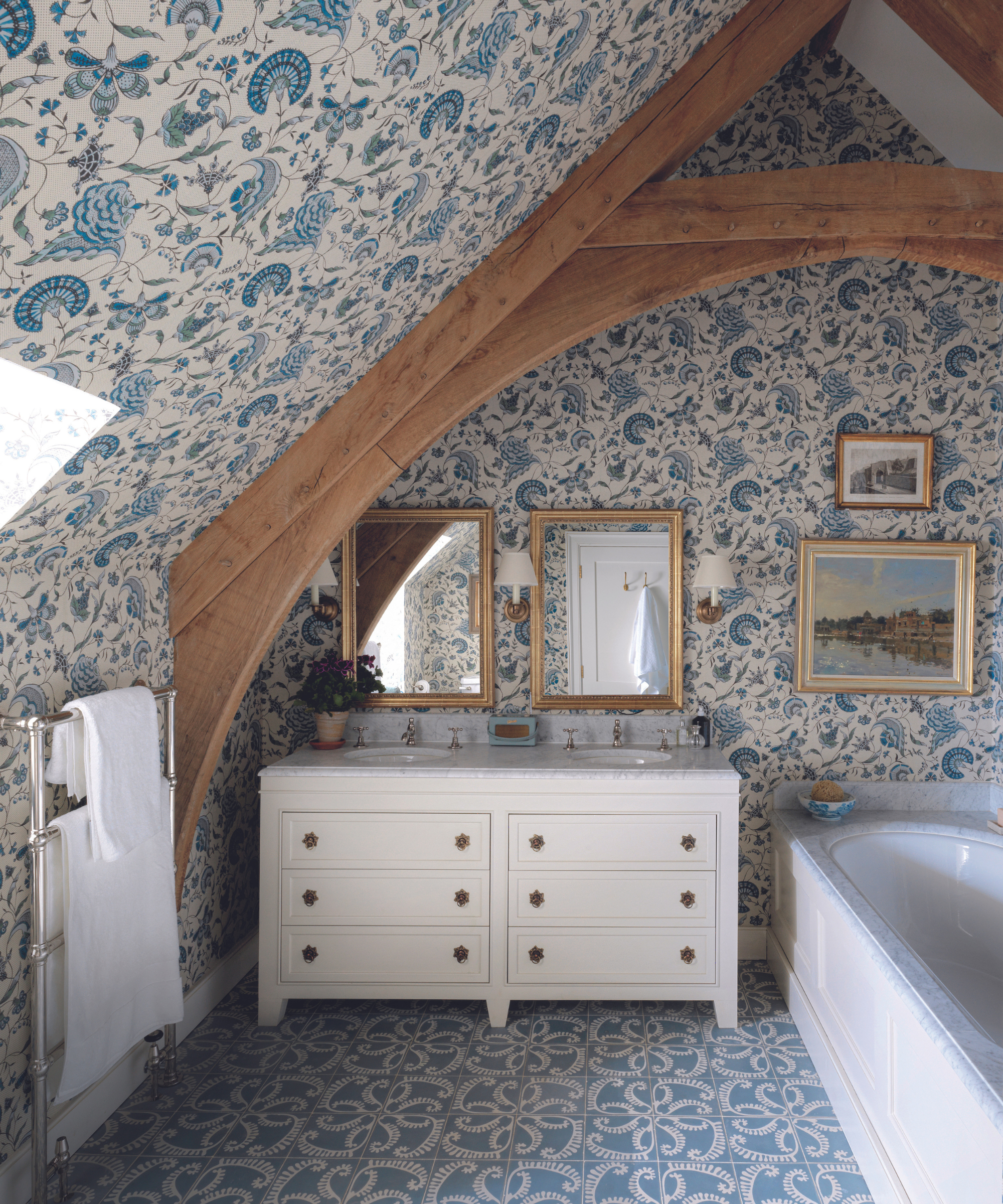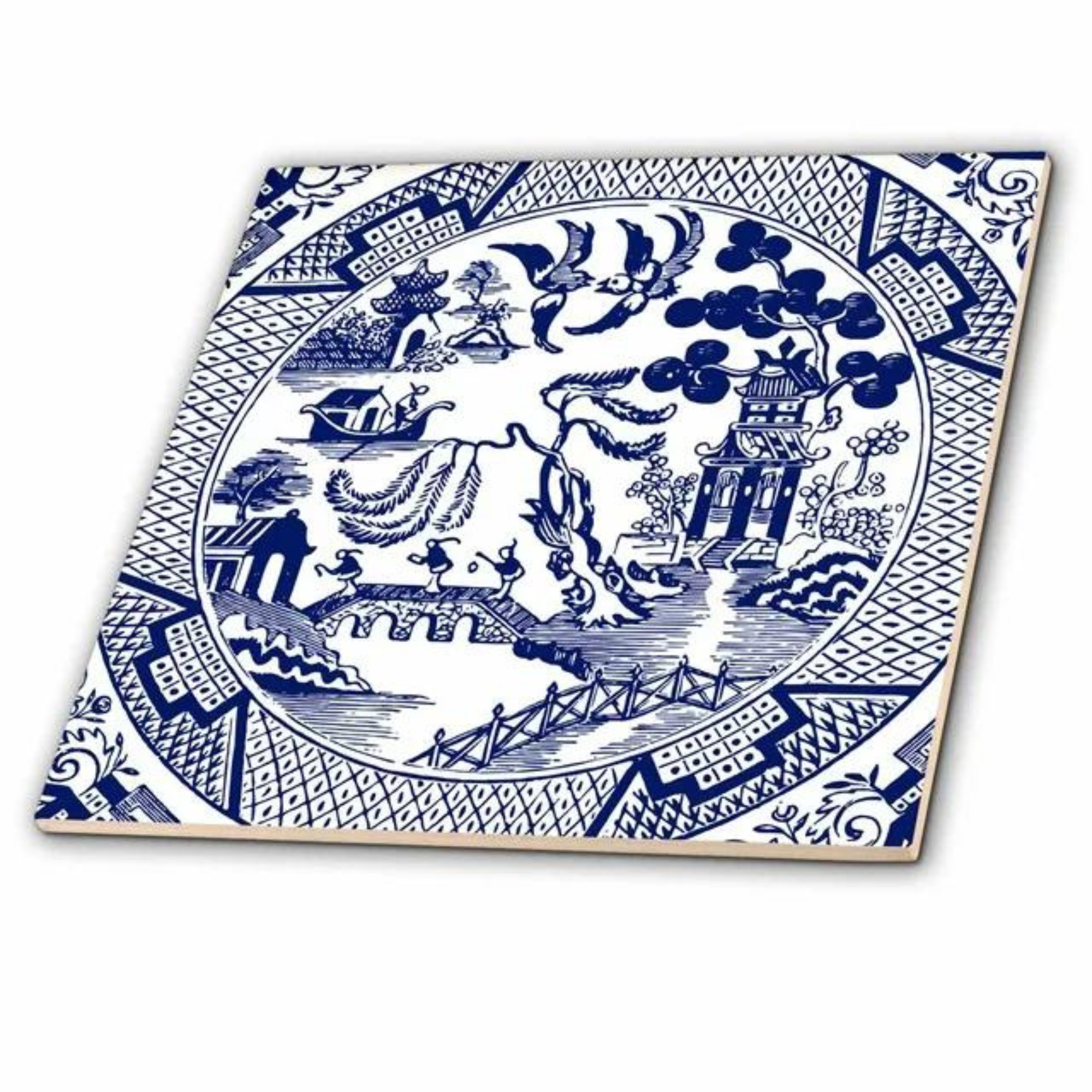How can you add character to a bathroom? 8 ways to introduce some heritage charm
With these changes, you can enhance the classical charm of your bathroom, even if you live in a new building

Holly Ransome

All too often, the bathroom is a room that we overlook when styling our homes. White and grey porcelain and stone take over, and we focus on creating functional, easy-to-clean spaces, rather than beautiful ones filled with character.
Yet it's worth paying attention to these rooms and by looking to the past, we can find inspiration in times when the bathroom was a continuation of the grandeur, luxury, and comfort found throughout the rest of your house.
We spoke to 8 interior design experts about how they've used tradition-inspired elements to instantly add character to a bathroom. With these bathroom ideas, you too can elevate yours into a sanctuary that is both practical and full of time-honored charm, even if your home is brand new.
8 tips from design experts on how to add character and charm to a bathroom
From patterned bathroom wallpaper to full-length drapes, we find out the simple and effective ways you can introduce historical elegance to your bathroom. Expert designers talk us through their projects, discussing how heritage-inspired style has elevated their practice and added character to such a practical space.
1. Create a focal fireplace

Walls in Lilac Pink emulsion, Edward Bulmer Natural Paint. Bespoke fender upholstered in Old Flax in Old Gold, Soane Britain. London freestanding bath, C.P. Hart. Project by Salvesen Graham.
‘Having a fireplace in a bathroom adds wonderful character to the room,’ says Mary Graham, co-founder of Salvesen Graham. This bespoke fender, upholstered in Soane’s Old Flax, is a lovely detail that recalls bygone days. ‘The traditional fireplace reflects the tone of the room, intentionally bringing in a new layer to the scheme and creating an inviting environment with a classical feel.'

Mary Graham is one of the design duo who founded Salvesen Graham, the esteemed London-based design practice that has over 25 years of industry experience. They offer a full service to both UK and global clientele.
2. Introduce wall panelling

Rimini cast iron bath; Tradition unlacquered brass bath filler; Tradition unlacquered brass basin taps; Venice basin on brass stand, £1,247; all Aston Matthews.
Wall paneling may be big in interior design trends right now but its origins in homes from the Tudor period onwards make it a strong choice for traditional bathroom decor today.
‘In a bathroom with high ceilings, paneling can help break up the walls and add visual interest,’ says Jamie Bebbington, managing director, Aston Matthews. ‘Try tongue-and-groove paneling for a country cottage effect, while square beaded panels work well in a grander setting.’
Design expertise in your inbox – from inspiring decorating ideas and beautiful celebrity homes to practical gardening advice and shopping round-ups.
3. Try traditional-style tiling

Wilding collection handmade wall tiles, Marlborough Tiles.
‘Traditional-style bathroom tiles, especially ones that are handmade, handpainted and full of unique character, are a great choice in older properties,’ says designer and color consultant Emma Diaz, who chose these classic Delft style tiles for the bathroom in her Cotswolds cottage.
‘The uneven finish of handmade tiles naturally softens the space, no matter what color or design you use, and feel more harmonious in their surroundings compared to uniform, machine-made tiles.’

Based in the Cotswolds, Emma Diaz works with her clients on both residential and commercial spaces to offer expert and individualized color advice and consultancy services. She also has a bespoke furniture collection.
4. Embrace period quirks

Mastello bath by Antonio Lupi; Samuel Heath Landmark freestanding bath shower mixer in City Bronze; bespoke waterproof wallpaper, all West One Bathrooms.
Listed period properties with awkward architectural elements can rarely be altered. Rather than attempt to ignore the low-slung dormer window in this en suite, West One Bathrooms has used it to frame a beautiful designer bathtub.
‘Do consider head height – a basin wouldn’t work here, but the bath, sat at a rakish angle allowing a peep to the flamingo behind, looks stunning as you step into the room,’ says head of design, Louise Ashdown.
5. Opt for curtains over blinds

Usk bath, Drummonds.Curtains in Verel De Belval silk by Métaphores, Abbott + Boyd. Project by Violet & George.
The unexpected use of sumptuous full-length curtains with deep pleats and a traditional pelmet brings the grandeur of a historic hotel bathroom to this spacd.
‘Exclusively used by a careful lady owner, we went against all the rules and chose luxurious silk curtains but in a family bathroom we’d recommend the amazing outdoor fabrics now available – try Pierre Frey – that no longer feel like woven plastic and are soft and warm,’ says Nicky Mudie, director, Violet & George.

Nicky Mudie is the founder and director of the interior design studio Violet & George, established in 2009 in London. Before starting her own company, she was head designer at Godrich Interiors and had over 10 years of industry experience. Her educational background is in Textile Design and Art History.
6. Decorate with patterned wallpaper

Jaipur wallpaper in Blue/Vert, Antoinette Poisson. Project by Sarah Vanrenen.
‘Wallpaper is so effective on slanted ceilings. I think it is a very English thing, that adds even more comfort and coziness to walls that already have character,’ says interior designer Sarah Vanrenen.
‘This is the principal bathroom in a 15th-century manor house and we wanted to make it really luxurious. The clients had a wonderful art collection, so we hung some lovely paintings to add to the splendor.’

Sarah Vanrenen has been leading her esteemed interior design practice for over 20 years, working on a range of both commercial and residential projects globally. Today she employs a team of people and has offices in both London and Berkshire.
7. Incorporate antique finds

Antique bath sourced from The Water Monopoly. Vintage mirror stand and rug. Project by VSP Interiors.
Lean into the authenticity of a traditional home by decorating with antiques for every element, right down to the accessories. In this period home, anything new was vetoed, and even the bathroom flooring was reclaimed from a nearby nunnery.
‘Antiques and montage pieces make a bathroom feel less utilitarian and more like a comfortable room that happens to be for bathing,’ says Henriette von Stockhausen, creative director, VSP Interiors.

Henriette von Stockhausen is the creative director at VSP Interiors - known for their ability to enhance historical properties with sensitivity. Before starting her own company, she worked with interior designer Stephen Ryan, former head of David Hicks Design. Her educational background includes the renowned Inchbald School of Design as well as Sotheby's.
8. Welcome dark wooden elements

Ragnvi wallpaper, Sandberg. Bespoke vanity in maple with Espresso stain by Winsome Interior Design. Morris small lantern; Katie small Acorn wall sconces; both Visual Comfort & Co. Project by Unique Kitchens and Baths.
Popular in the early 20th century, bringing furniture in dark wood, such as rosewood and mahogany, into the bathroom lends a richness and texture that’s perfect for paying homage to a period setting.
‘The dark wood vanity grounds this bathroom to the historical elements of the home and creates a warm atmosphere,’ agrees Tanya Smith-Shiflett, founder of Unique Kitchens and Baths. ‘The linen closet is a vintage piece that adds richness and provides that traditional element that only vintage pieces can achieve.’
As with any room in the house, in the early stages of designing a bathroom, it's worth considering the true historical value of the room, and whether there are original features that should be preserved or even emphasized. However even when working with a modern room full of clean lines, smooth surfaces, and equal proportions, adhere to the above design tips and tricks and you can recreate a characterful space.
By adding period-style flourishes, you can build up a layered bathroom interior that is brimming with character – a welcoming space that you want to linger in as you go about your morning and evening cleansing rituals. Elegant and luxurious, like the restrooms of historical homes, yet with all the convenience and functionality of modern times.
Linda graduated from university with a First in Journalism, Film and Broadcasting. Her career began on a trade title for the kitchen and bathroom industry, and she has worked for Homes & Gardens, and sister-brands Livingetc, Country Homes & Interiors and Ideal Home, since 2006, covering interiors topics, though kitchens and bathrooms are her specialism.
- Holly RansomeEditorial Assistant (print and digital)



